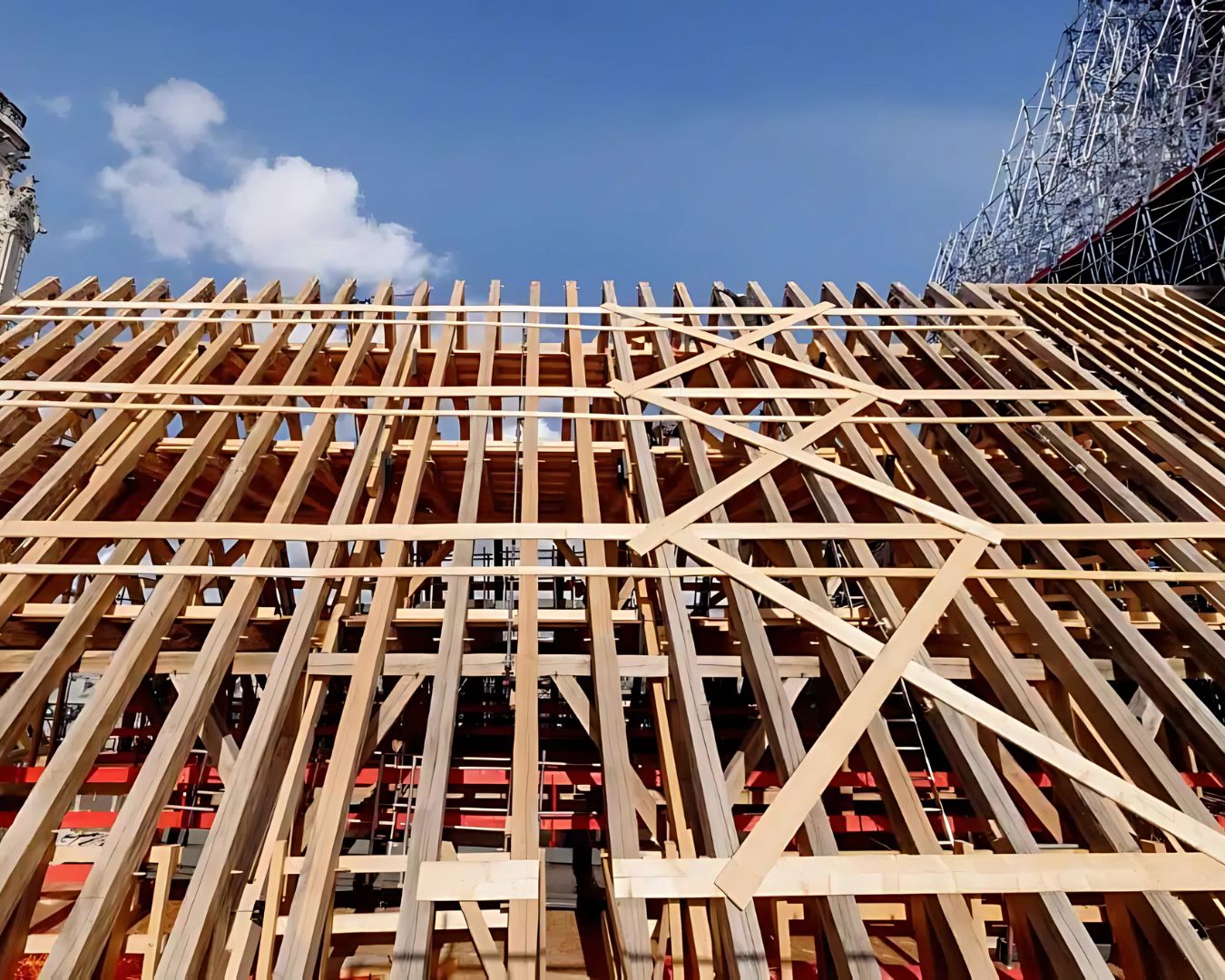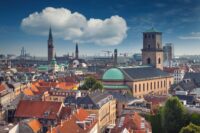- Home
- Articles
- Architectural Portfolio
- Architectral Presentation
- Inspirational Stories
- Architecture News
- Visualization
- BIM Industry
- Facade Design
- Parametric Design
- Career
- Landscape Architecture
- Construction
- Artificial Intelligence
- Sketching
- Design Softwares
- Diagrams
- Writing
- Architectural Tips
- Sustainability
- Courses
- Concept
- Technology
- History & Heritage
- Future of Architecture
- Guides & How-To
- Art & Culture
- Projects
- Interior Design
- Competitions
- Jobs
- Store
- Tools
- More
- Home
- Articles
- Architectural Portfolio
- Architectral Presentation
- Inspirational Stories
- Architecture News
- Visualization
- BIM Industry
- Facade Design
- Parametric Design
- Career
- Landscape Architecture
- Construction
- Artificial Intelligence
- Sketching
- Design Softwares
- Diagrams
- Writing
- Architectural Tips
- Sustainability
- Courses
- Concept
- Technology
- History & Heritage
- Future of Architecture
- Guides & How-To
- Art & Culture
- Projects
- Interior Design
- Competitions
- Jobs
- Store
- Tools
- More
Inside the Notre Dame Cathedral Renovation Process: Preserving History and Heritage
Discover the intricate journey of restoring Notre Dame Cathedral after the devastating 2019 fire. Explore how traditional craftsmanship meets cutting-edge technology to preserve its Gothic splendor, cultural heritage, and iconic status. Learn about the global effort, challenges, and milestones in this ambitious project set to unveil a renewed symbol of resilience by 2024.

Notre Dame Cathedral has always been a symbol of history, art, and resilience. When the devastating fire of 2019 engulfed its iconic spire and roof, the world watched in shock. But from the ashes of that tragedy, a monumental restoration effort began, uniting experts and admirers across the globe in a shared mission to bring this masterpiece back to life.
As we delve into the intricate renovation process, it’s clear this isn’t just about repairing a building—it’s about preserving centuries of culture and craftsmanship. From sourcing authentic materials to employing cutting-edge technology, every step reflects a deep respect for Notre Dame’s legacy. Let’s explore how this ambitious project is shaping the future of one of the world’s most beloved landmarks.
Table of Contents
ToggleOverview Of The Notre Dame Cathedral Renovation Process
The renovation of Notre Dame Cathedral began shortly after the fire in April 2019, focusing on structural stabilization to prevent further damage. This phase included the installation of scaffolding, removal of debris, and reinforcement of weakened walls and vaults.
Restoration efforts prioritize authenticity by sourcing materials identical to the original construction. Limestone from French quarries and oak timber for the spire match 12th- and 13th-century standards. Traditional craftsmanship, supported by modern tools, ensures long-term structural integrity.
Advanced technology aids the process with 3D laser scans and digital modeling, documenting every detail before reconstruction begins. These tools help architects and engineers replicate Gothic designs accurately.
The project also incorporates sustainability by recycling portions of damaged wood and stone where possible. Environmental considerations guide material selection and waste management throughout the restoration.
Efforts to meet the 2024 completion target, aligning with the Paris Olympics, have prompted simultaneous work on various sections. Hundreds of craftsmen, including carpenters, stonemasons, and sculptors, collaborate to restore Notre Dame to its former glory.

The Aftermath Of The 2019 Fire
The fire in April 2019 caused extensive damage to Notre Dame Cathedral, leaving critical parts of the structure compromised. Immediate interventions focused on halting further deterioration while preparing for the complex restoration ahead.
Key Damages To The Structure
The fire destroyed the 19th-century spire and two-thirds of the roof, resulting in the collapse of the iconic vaults in several places. The oak timber framework, known as the “Forest,” burned completely. Lead from the spire melted, contaminating surrounding areas. Intense heat and water from firefighting efforts weakened the stone walls, threatening the integrity of the entire structure. The grand organ and stained-glass windows were spared, though some suffered smoke damage.
Emergency Stabilization Efforts
Stabilization measures started immediately to prevent further degradation. Scaffolding was erected to secure the remaining structure, mitigate collapse risks, and allow debris removal. Flying buttresses were braced, and temporary wooden frameworks reinforced vulnerable sections of the vaults. A protective canopy covered the exposed interior from weather damage. Innovative water drainage systems were installed after firefighting efforts, preventing further erosion. Specialized teams closely monitored for structural shifts using sensors to ensure ongoing safety during the process.
Restoration Techniques And Methods
Restoring Notre Dame Cathedral requires a balance of traditional methods and advanced technology. This approach ensures the preservation of its historical identity while integrating modern innovations.
Preserving Historical Integrity
We prioritize using authentic materials and craftsmanship to maintain Notre Dame’s historical authenticity. Limestone from French quarries replaces damaged stones, matching the original texture and color. For the spire and roof framework reconstruction, oak timber adheres to 12th- and 13th-century specifications. Skilled artisans replicate medieval techniques like stone masonry and timber framing to uphold original construction standards. Methods such as lime-based mortars ensure compatibility with existing materials, reducing the risk of structural tension or deterioration. Even decorative elements, including sculptures and stained glass, undergo careful restoration by specialists to retain their original design.
Modern Technologies In Use
Modern technologies enhance precision and efficiency throughout the renovation. 3D laser scanning creates detailed digital models of the cathedral, enabling accurate measurements for repairs. Advanced software aids architects and engineers in designing exact replacements for complex Gothic structures. We integrate robotics and portable CNC machines to carve stone elements, ensuring consistency in intricate patterns. Thermal cameras and sensors monitor structural stability, identifying hidden vulnerabilities without invasive methods. Drones inspect hard-to-reach areas, offering real-time assessments of progress and damage. By combining these tools with traditional techniques, we’re creating a restoration process that honors Notre Dame’s legacy and supports its long-term preservation.

Challenges Faced During The Renovation
Restoring Notre Dame Cathedral involves navigating complex challenges. Efforts to maintain authenticity, safety, and operational efficiency have required innovative solutions and global collaboration.
Financial And Logistical Hurdles
Raising funds for the renovation has posed significant difficulties despite extensive donations. Over $900 million has been pledged globally, yet coordinating and managing financial resources from multiple donors has created administrative delays. Allocating funds to meet restoration priorities, including sourcing authentic materials and employing skilled artisans, has required meticulous planning.
Logistical challenges have arisen from the cathedral’s urban location. Transporting large limestone blocks and oak timbers through Paris’s constrained streets has demanded careful scheduling. The spire’s reconstruction, requiring custom-made scaffolding and massive cranes, adds complexity to the project. Furthermore, balancing ongoing work with the site’s cultural significance as a tourist destination strains resources.
Balancing Safety And Preservation
Maintaining safety during restoration without compromising historical elements has been critical. The cathedral’s weakened structure, combined with exposure to lead contamination from the fire, poses risks for workers. Specialized protective gear and decontamination protocols address these hazards while safeguarding health.
Preservation efforts aim to honor historical craftsmanship, yet the fragile state of damaged sections has required innovative approaches. Securing unstable vaults and buttresses while ensuring accurate replication of Gothic designs involves balancing structural stability and historical accuracy. Technologies like thermal imaging and structural sensors prevent further harm to the building by continuously monitoring its condition throughout restoration.
Timeline And Progress Of The Renovation
The Notre Dame Cathedral renovation has moved steadily forward since the 2019 fire, balancing historical accuracy and innovative techniques. Key phases highlight the dedication of global teams working toward its restoration.
Major Milestones Achieved
Several milestones define the progress so far. By mid-2019, the initial stabilization phase secured the cathedral, including scaffolding installation, debris removal, and structural reinforcements. In 2020, the removal of melted scaffolding from the damaged spire marked a critical achievement, ensuring safer access for artisans and engineers.
In 2021, restoration advanced with the sourcing and preparation of historic materials. French quarries supplied limestone for the vaults, while oak timber selected for the spire adhered to 13th-century craftsmanship standards. By 2022, the full reconstruction of the iconic “Forest” framework began, involving 1,000 ancient oaks sourced across France.
Key steps in 2023 included assembling the new spire framework, aligning it with original Gothic dimensions using digital models. Additionally, restoration of historical stained-glass windows progressed, employing skilled artisans and precision techniques to revive intricate medieval designs.
Projected Completion Date
Efforts remain focused on completing the project by December 2024. This timeline aligns with the Paris Olympics, emphasizing the symbolic significance of reopening Notre Dame as a global cultural icon. Accelerated work schedules, supported by over 800 craftsmen, address challenges such as material logistics and complex Gothic replications.
Key remaining tasks include finishing the spire installation, roof assembly, and interior restorations, ensuring safety, historic integrity, and functionality for re-opening.

Public And Cultural Impact
The restoration of Notre Dame Cathedral resonates globally, going beyond architectural repair to influence society’s connection to history, art, and identity. This section explores worldwide support and its cultural significance in preserving heritage.
Global Support And Donations
The fire triggered a massive outpouring of global support, with over $900 million pledged from individuals, governments, and institutions by the end of 2019. High-profile donations included $100 million from LVMH Group and $113 million from the Bettencourt family. Contributions arrived from over 150 countries, showcasing Notre Dame’s universal appeal. Fundraising campaigns, such as the French Heritage Society’s initiatives, enabled smaller donors to participate, democratizing the effort. Volunteers and non-profits also raised awareness and provided logistical support for restoration activities.
Significance To Art And Heritage
Notre Dame is a cornerstone of Gothic architecture and world art, influencing countless creatives since its 12th-century construction. Its sculptures, stained-glass windows like the Rose Window, and flying buttresses are iconic works studied globally. Preserving these elements ensures continued inspiration for artists and architects. The restoration’s emphasis on historical accuracy respects cultural memories tied to this UNESCO World Heritage Site. Events like exhibitions and digital recreations foster public engagement, reaffirming Notre Dame’s role as a cultural and spiritual symbol.
Conclusion
The restoration of Notre Dame Cathedral exemplifies the intersection of heritage preservation and modern innovation. By combining traditional craftsmanship with advanced technology, we’re ensuring the authenticity and longevity of this historic landmark. Our focused efforts, from replicating Gothic designs using medieval techniques to utilizing 3D laser scans, reflect a commitment to safeguarding Notre Dame’s cultural significance.
Global collaboration plays a key role in the renovation process. Artisans, engineers, historians, and donors from over 150 countries are uniting to restore not only the cathedral’s physical structure but also its symbolic identity. The rebuilding of the “Forest” framework, the spire, and stained-glass windows highlights the collective dedication to accuracy and sustainability.
Although challenges such as urban logistical constraints, safety concerns, and financial coordination persist, innovative solutions continue to drive progress. Thermal imaging, structural sensors, and digital modeling ensure worker safety and precision during the restoration. Aligning with the 2024 completion goal, simultaneous efforts across key sections advance the project efficiently.
Notre Dame’s renovation stands as a monumental endeavor to honor history, inspire future generations, and rebuild a global cultural treasure. This comprehensive approach demonstrates the resilience of human effort in overcoming destruction and fostering hope for renewal.
- cathedral fire recovery project
- cathedral restoration efforts
- famous cathedral renovation
- historic site recovery
- Notre Dame construction news
- Notre Dame facade repair
- Notre Dame fire renovations
- Notre Dame historical preservation
- Notre Dame renovation progress
- Notre Dame spire reconstruction
- Notre Dame structural rebuild
- Paris architectural restoration
- restoration of French landmarks
- World Heritage site restoration
illustrarch is your daily dose of architecture. Leading community designed for all lovers of illustration and #drawing.
Submit your architectural projects
Follow these steps for submission your project. Submission FormLatest Posts
What Does an Air Purifier Do? Understanding Its Purpose & Key Features
What does an air purifier do for families with babies? It does...
How to Build a Long-Term Property Maintenance Plan That Protects Health and Reduces Utility Waste
Building a long-term property maintenance plan helps protect occupant health, reduce utility...
Why Smart Street Lighting Is the Future of Urban Infrastructure
Urban design extends far beyond individual buildings. Architects now shape entire city...
Understanding Section Drawings in Architecture: A Practical Guide
Learn section drawings in architecture: what they are, types, symbols, lineweights, and...












Leave a comment